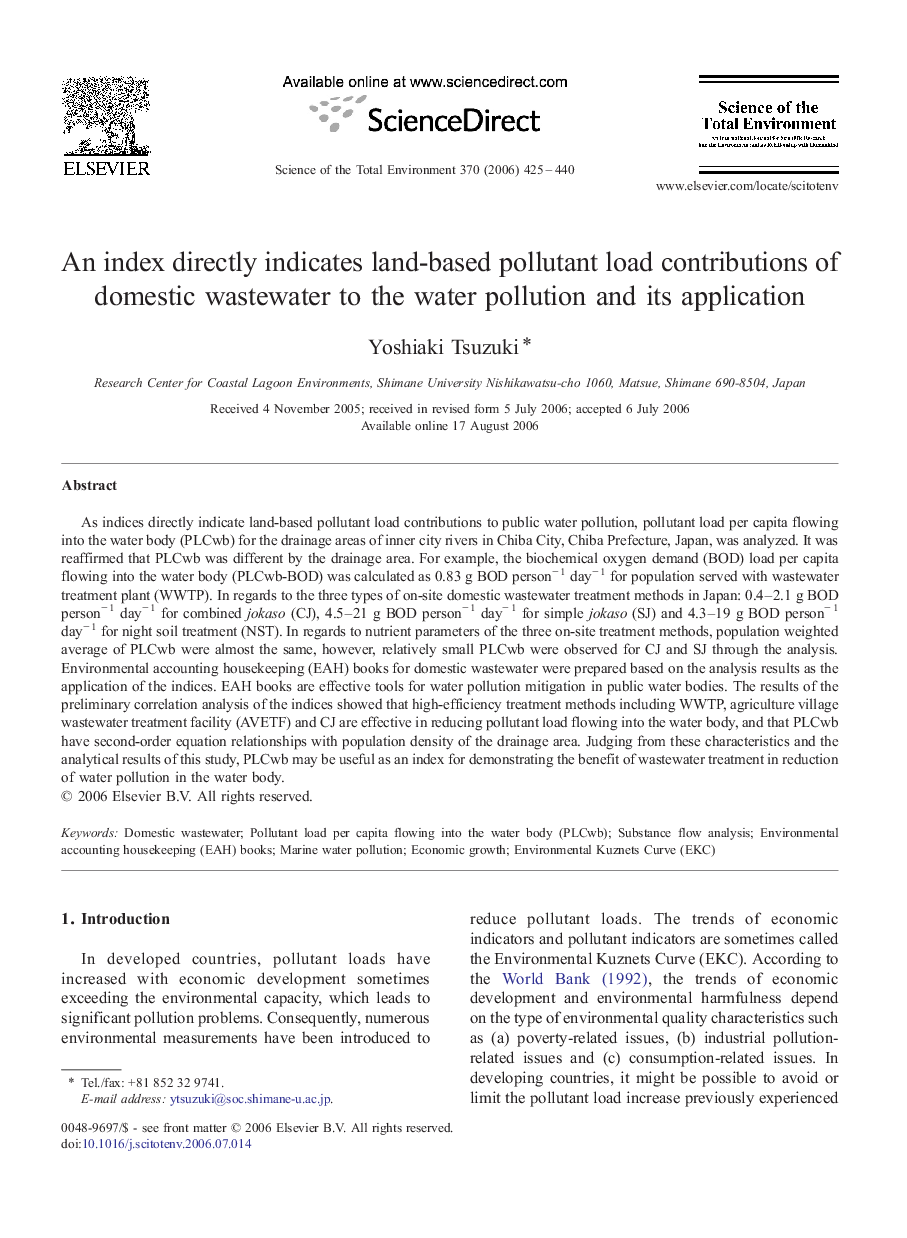| Article ID | Journal | Published Year | Pages | File Type |
|---|---|---|---|---|
| 4433672 | Science of The Total Environment | 2006 | 16 Pages |
As indices directly indicate land-based pollutant load contributions to public water pollution, pollutant load per capita flowing into the water body (PLCwb) for the drainage areas of inner city rivers in Chiba City, Chiba Prefecture, Japan, was analyzed. It was reaffirmed that PLCwb was different by the drainage area. For example, the biochemical oxygen demand (BOD) load per capita flowing into the water body (PLCwb-BOD) was calculated as 0.83 g BOD person− 1 day− 1 for population served with wastewater treatment plant (WWTP). In regards to the three types of on-site domestic wastewater treatment methods in Japan: 0.4–2.1 g BOD person− 1 day− 1 for combined jokaso (CJ), 4.5–21 g BOD person− 1 day− 1 for simple jokaso (SJ) and 4.3–19 g BOD person− 1 day− 1 for night soil treatment (NST). In regards to nutrient parameters of the three on-site treatment methods, population weighted average of PLCwb were almost the same, however, relatively small PLCwb were observed for CJ and SJ through the analysis. Environmental accounting housekeeping (EAH) books for domestic wastewater were prepared based on the analysis results as the application of the indices. EAH books are effective tools for water pollution mitigation in public water bodies. The results of the preliminary correlation analysis of the indices showed that high-efficiency treatment methods including WWTP, agriculture village wastewater treatment facility (AVETF) and CJ are effective in reducing pollutant load flowing into the water body, and that PLCwb have second-order equation relationships with population density of the drainage area. Judging from these characteristics and the analytical results of this study, PLCwb may be useful as an index for demonstrating the benefit of wastewater treatment in reduction of water pollution in the water body.
